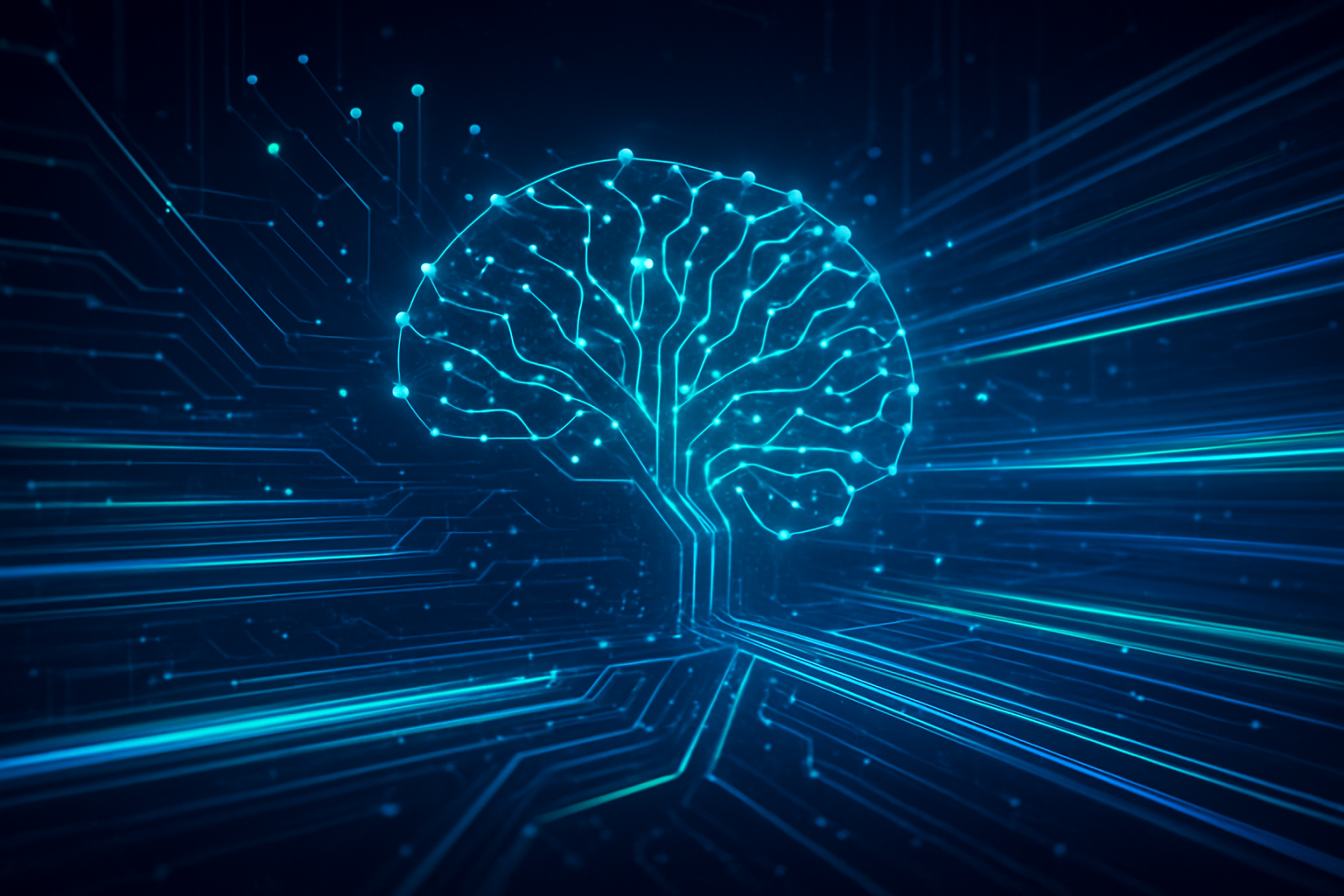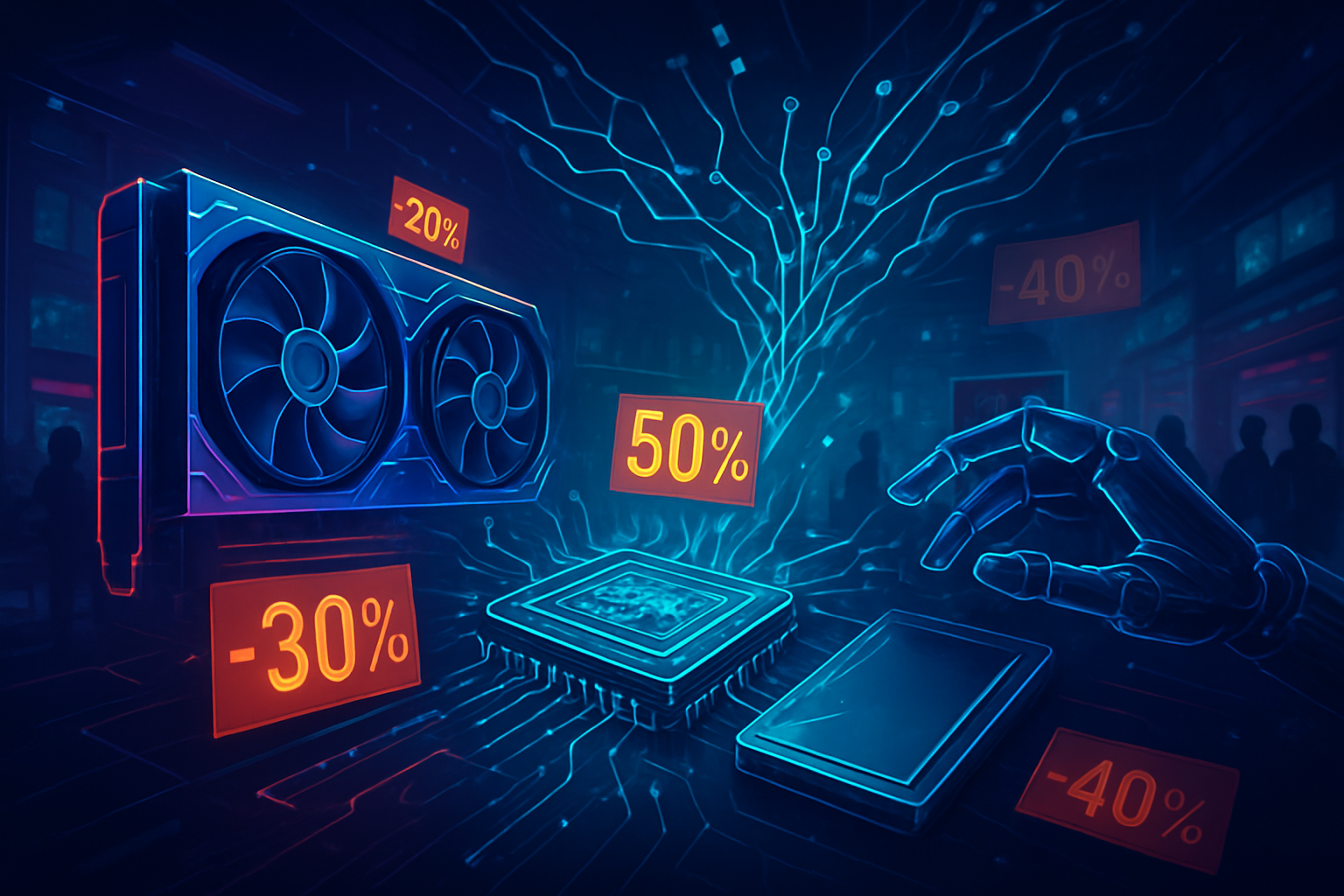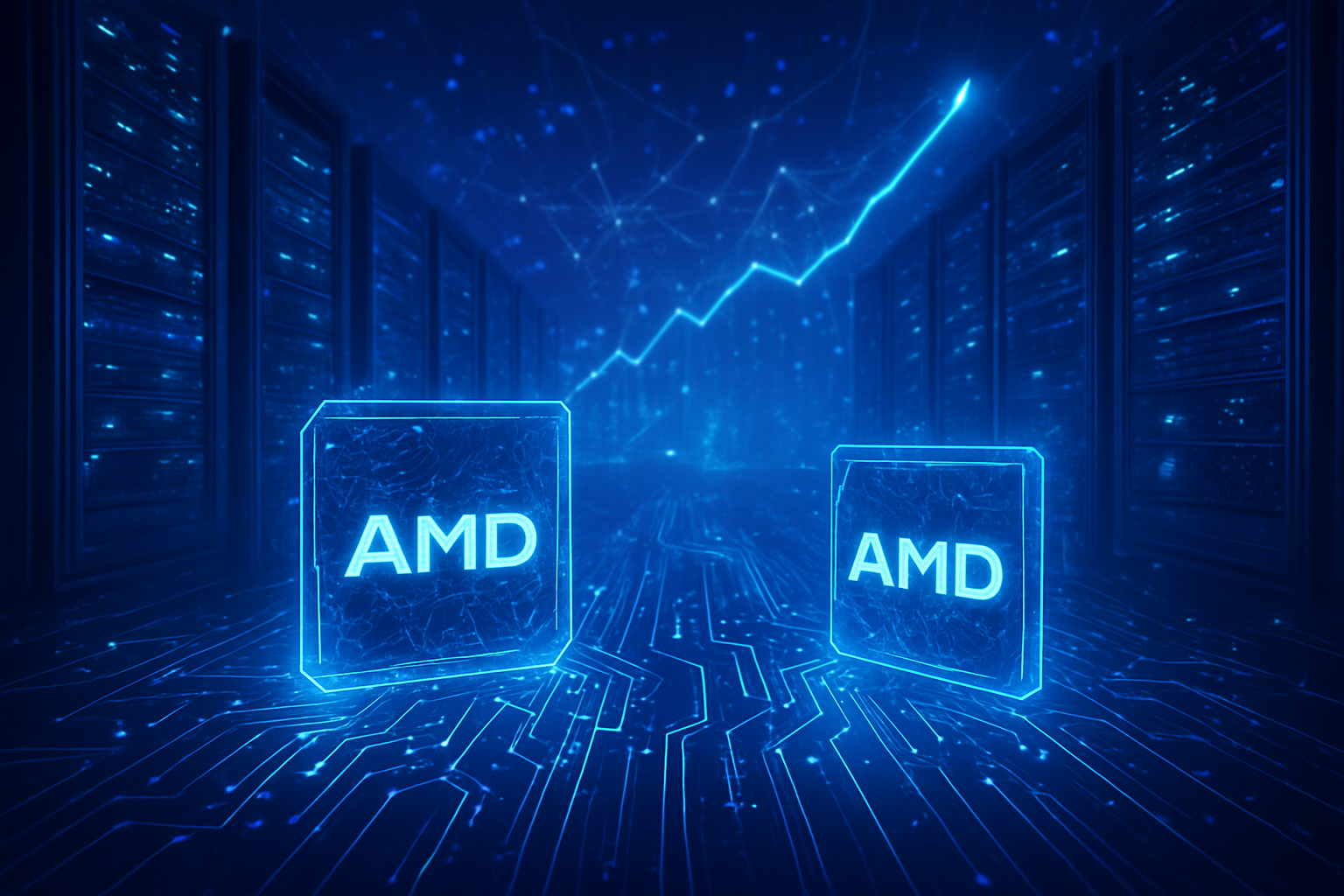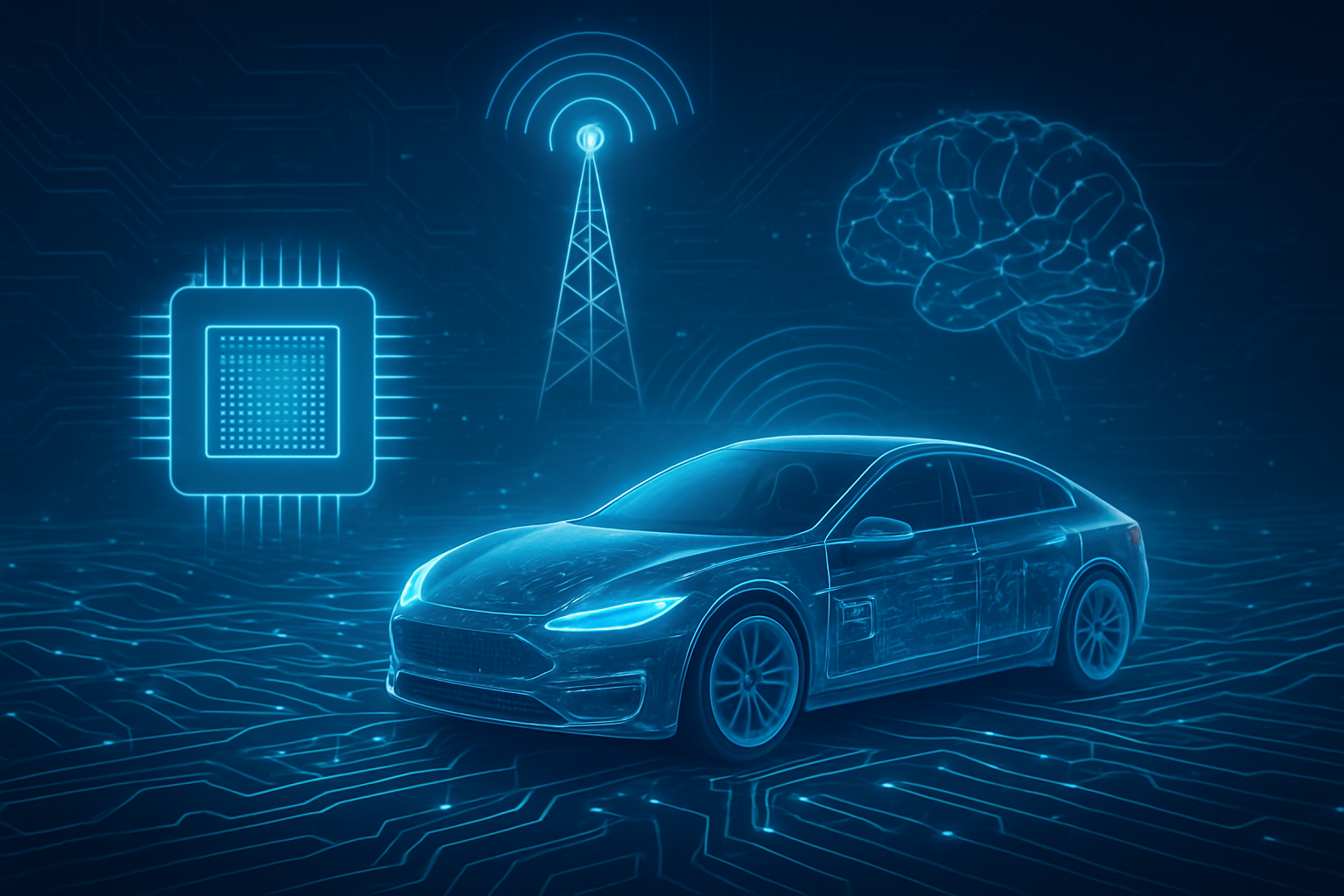Artificial intelligence (AI) is no longer a futuristic concept but a tangible, immediate force profoundly reshaping corporate earnings and driving unprecedented valuations within the technology sector. Companies across various industries are already leveraging AI to boost revenues, slash costs, enhance productivity, and redefine their market standing. Recent earnings reports and market trends unequivocally underscore AI's transformative financial impact, positioning it as a central pillar of global economic growth in the mid-2020s.
The immediate significance of AI lies in its ability to unlock substantial value across the enterprise. From automating routine tasks to powering hyper-personalized customer experiences and accelerating scientific discovery, AI is proving to be a catalyst for both efficiency gains and novel revenue streams. This widespread adoption and the promise of future innovation have ignited an investment frenzy, propelling the market capitalizations of AI-forward technology companies to historic highs and recalibrating how investors assess potential growth.
The AI Engine: Specific Advancements Fueling Financial Gains
AI's direct contribution to corporate earnings stems from a suite of sophisticated applications that significantly outperform previous technological approaches. These advancements, leveraging machine learning, natural language processing, and advanced analytics, are not just incremental improvements but fundamental shifts in operational capabilities.
Generative AI for Content Creation, Marketing, and Sales: Generative AI, exemplified by large language models, is proving transformative. Companies are utilizing it to accelerate product development, personalize customer experiences, and enhance marketing efforts, leading to significant cost savings and revenue growth. McKinsey's research indicates that generative AI alone could add between $2.6 trillion and $4.4 trillion to global corporate profits annually. For example, AI-powered chatbots reduce customer support costs by up to one-third and make service 14% faster. In marketing, generative AI boosts productivity by 5% to 15% of total marketing spending, optimizing content and generating sales lead profiles. Unlike traditional marketing automation that follows predefined rules, generative AI dynamically creates nuanced, on-brand content and personalizes interactions at scale, leading to higher conversion rates.
AI in Drug Discovery and Pharmaceutical Research: The pharmaceutical industry is leveraging AI to dramatically reduce the time and cost associated with drug development and clinical trials. AI accelerates the identification of potential drug candidates, optimizes molecular design, and predicts drug efficacy and safety profiles. This can shorten the drug discovery process from 10-15 years to as little as one year and reduce R&D costs significantly, with AI applications projected to create between $350 billion and $410 billion in annual value for pharmaceutical companies by 2025. Historically, drug discovery was a lengthy, expensive, and high-failure-rate process; AI, through advanced algorithms, can screen millions of compounds in days, analyze vast biological data, and predict outcomes with much higher precision.
AI-Powered Supply Chain Optimization: AI is revolutionizing supply chain management by enhancing visibility, improving forecasting, and optimizing logistics. AI-driven predictive analytics for demand forecasting minimizes overstocking and stockouts, reducing waste, lowering holding costs, and improving profitability. Manufacturing executives using AI in supply chains report decreased costs (61%) and increased revenues (53%). Traditional supply chain management relied on historical data and static algorithms, making it less responsive. AI systems, integrated with IoT and robotics, can process real-time data from multiple sources, dynamically adjust to market fluctuations, and optimize operations.
AI for Personalized Marketing and Customer Experience: AI enables hyper-personalization, delivering tailored content, product recommendations, and services in real-time. Personalized experiences significantly increase customer engagement, conversion rates, and sales. Companies implementing AI-powered marketing strategies have seen an improvement in customer engagement (93%) and an increase in sales (87%). Modern AI uses deep learning, natural language processing, and computer vision to analyze vast amounts of individual customer data, identifying complex patterns and preferences to deliver highly relevant and timely interactions.
The core difference from previous approaches lies in the shift from static, rule-based software to adaptive, learning, and autonomous AI systems. Enterprise AI processes both structured and unstructured data in real-time, learns from data, adapts to changing conditions, and makes decisions independently, often through AI agents. Initial reactions from the AI research community and industry experts are characterized by optimism regarding the significant economic potential, tempered with caution regarding strategic implementation challenges. While the potential is vast, capturing enterprise-level value from AI requires a clear strategy and careful consideration of data quality, ethics, and integration with human expertise.
Reshaping the Tech Landscape: Giants, Startups, and the AI Arms Race
AI has profoundly reshaped the technology landscape, impacting AI-first companies, major tech giants, and startups by altering competitive dynamics, fostering disruption, and creating new strategic advantages. This transformative force is redefining market positioning and product development across the industry.
AI-First Companies are adopting strategies where AI is a default consideration for every decision and investment. This approach allows them to achieve up to 25% better business outcomes by accelerating innovation, improving efficiency, and uncovering new opportunities. Companies like OpenAI, creators of ChatGPT, started as small entities but quickly became global leaders, disrupting industries from education to software development. Their speed, agility, and data-driven decision-making allow them to pivot faster and adapt to market changes in real-time, often outpacing larger, slower-moving entities.
Major Tech Giants are engaged in an intense "AI arms race," investing heavily to integrate AI into their core operations and secure market dominance.
- Microsoft (NASDAQ: MSFT) has committed substantial funds to OpenAI, integrating AI into products like Microsoft Copilot and Azure, leveraging its cloud infrastructure for AI capabilities.
- Amazon (NASDAQ: AMZN) has invested in Anthropic and relies on AI for its e-commerce platform, Alexa, and Amazon Web Services (AWS), which sees significant increases in cloud service revenues attributable to AI-related demand.
- Alphabet (NASDAQ: GOOGL), through Google and DeepMind, develops specialized AI chips like Tensor Processing Units (TPUs) and integrates AI across its search, Gmail, and Google Cloud services.
- Apple (NASDAQ: AAPL) uses AI for Siri, fraud detection, and battery optimization, with "Apple Intelligence" adding smarter, contextual features.
- Meta Platforms (NASDAQ: META) utilizes AI for enhanced ad targeting and user engagement across its social media platforms.
These giants leverage their vast user bases, proprietary data, and existing ecosystems to train, deploy, and monetize AI systems at scale.
Startups have seen a significant transformation of their landscape, with AI lowering barriers to entry and enabling rapid innovation. The widespread availability of cloud computing and open-source AI tools means startups can develop powerful solutions without massive upfront investment, leading to an "explosion of new startups." AI-based startups are attracting significant venture capital, with over $100 billion invested globally in 2024. These agile companies are not just filling gaps but fundamentally changing how industries operate, offering faster, smarter, and more cost-effective solutions in sectors like healthcare, financial services, and retail.
Companies best positioned to benefit fall into several categories:
- AI Infrastructure Providers: Nvidia (NASDAQ: NVDA), a pioneer in accelerated computing, whose GPUs are essential for training and running AI models. Advanced Micro Devices (NASDAQ: AMD) is rapidly gaining ground with AI GPUs. Taiwan Semiconductor Manufacturing Co. (NYSE: TSM) is the leading manufacturer of advanced chips. Super Micro Computer (NASDAQ: SMCI) is a leader in AI-optimized server technology.
- Major Cloud Service Providers: Microsoft (Azure), Amazon (AWS), and Alphabet (Google Cloud) offer AI-as-a-Service and the underlying cloud infrastructure.
- Companies with Proprietary Data and Ethical AI Frameworks: Those that can leverage unique datasets to train superior AI models and build trust.
- Agile "AI-First" Companies: Both large and small, those that embed AI into every aspect of their strategy and operations.
AI introduces more layers of competition across the entire "AI stack," from chips and data infrastructure to algorithms and end-user applications. This intensifies competition, shifts sources of advantage towards proprietary data and speed of learning, and disrupts existing products through automation, generative capabilities, and enhanced customer experiences. Incumbents face challenges, but many are adapting by adopting an "AI-first" mindset, investing in data strategies, prioritizing ethical AI, and leveraging AI for personalization and operational optimization.
AI's Broader Canvas: Societal Shifts and Economic Repercussions
The wider significance of AI's impact on corporate earnings and valuations extends far beyond the tech sector, driving profound societal and economic shifts. As of November 2025, AI is undeniably reshaping industries, generating substantial profits, and sparking intense debate about its future trajectory, potential risks, and historical parallels.
AI is a significant driver of corporate earnings and market valuations, particularly within the technology sector and for companies that effectively integrate AI into their operations. Many S&P 500 companies are expected to see substantial net benefits, with Morgan Stanley estimating annual net economic benefits of approximately $920 billion for these companies, potentially translating into $13 trillion to $16 trillion in market value creation. This growth is fueled by both cost cutting and new revenue generation through AI, leading to efficiency gains and accelerated innovation. Industries like healthcare, manufacturing, and finance are experiencing significant AI-driven transformations, with projections of billions in annual savings and added value. This has led to an "AI infrastructure arms race," with massive investments in data centers and AI chips, bolstering earnings for suppliers like AMD and Cisco Systems (NASDAQ: CSCO).
The AI landscape in November 2025 is characterized by the dominance of generative AI, widespread experimentation with AI agents, and a soaring demand for diversified AI talent. Governments are increasingly involved in guiding AI's development toward broader societal benefit and ethical deployment. AI is projected to significantly boost global GDP, with estimates suggesting a $15.7 trillion contribution by 2030. However, concerns persist about economic inequality and the digital divide, as the benefits risk remaining in the hands of a privileged few.
Potential concerns include:
- Job Displacement: Goldman Sachs Research estimates AI could displace 6-7% of the US workforce if widely adopted, with global impacts affecting up to 40% of jobs by 2026. Entry-level white-collar roles are particularly vulnerable. While new jobs will be created, there's an urgent need for workers to acquire new skills.
- Ethical Issues: These include AI literacy, the need for trust, transparency, and accountability in "black box" AI models, potential biases in algorithms, data privacy and security concerns, and unresolved intellectual property rights for AI-generated works.
- 'AI Bubble': The debate over whether current AI valuations constitute a bubble is intense. Some analysts see risks resembling the dot-com bubble, with high investment spending and stretched valuations. Others argue this wave is different, with leading AI companies often being powerful incumbents with strong balance sheets and actual profits. However, the concentration of market power and blurring lines between revenue and equity in AI deals (e.g., Nvidia selling chips to OpenAI for a stake) raise concerns about economic distortion.
The current AI revolution draws comparisons to the Industrial Revolution in reshaping labor markets and the Internet Revolution (dot-com bubble) due to hype and soaring valuations. While both periods saw significant hype and investment, today's leading AI companies often have stronger fundamentals. However, the current wave of AI, particularly generative AI, is seen by many as unique in its speed, depth, and potential to disrupt a wider range of high-skill professions, marking a pivotal moment in technological history.
The Horizon: Future Trajectories and Emerging Challenges
The future impact of AI on corporate earnings and tech valuations is poised for significant developments in both the near and long term. As of November 2025, the AI landscape is characterized by rapid innovation, substantial investment, and a growing recognition of its potential to redefine business operations and financial markets.
In the near term (2025-2028), AI is already demonstrating tangible revenue and productivity impacts, with major tech companies disclosing tens of billions in incremental AI-related capital spending. Morgan Stanley projects generative AI (GenAI) revenue to increase more than 20-fold over the next three years, potentially reaching $1.1 trillion by 2028. However, this rapid growth is accompanied by warnings of an "AI bubble," with unprecedented market capitalizations and valuations appearing disconnected from traditional financial fundamentals, as seen with companies like Palantir Technologies (NYSE: PLTR) trading at extreme earnings multiples. A significant trend is the widening "AI value gap," where a small percentage of "future-built" companies are accelerating value creation, expecting twice the revenue increase and 40% greater cost reductions by 2028 compared to laggards.
Longer term (2028 and beyond), AI is expected to gradually reshape the credit quality of US tech companies and drive substantial economic growth. The overall AI market is forecast to expand to nearly $650 billion by 2028, accounting for nearly 15% of total global IT spending. Full AI adoption across S&P 500 companies could yield an annual net benefit of $920 billion, primarily from cost reductions and additional revenue, potentially leading to a market cap increase of $13 trillion to $16 trillion for the S&P 500. Agentic AI, capable of planning, decision-making, and task execution with minimal human oversight, is expected to contribute substantially to these benefits.
Potential applications and use cases on the horizon span enhanced customer support, detailed customer insights, automated sales, dynamic pricing, and accelerated product and service development. AI will continue to automate operations across various functions, leading to significant cost reductions and improved fraud detection. In financial services, AI will automate mundane tasks for financial planners and enhance predictive analytics for strategic planning and credit risk assessment.
Despite immense potential, several significant challenges hinder the full realization of AI's impact:
- Data Quality and Governance: Messy data, poor data integrity, and conflicting formats are major obstacles.
- Privacy and Security Concerns: AI systems often process sensitive data, raising concerns about confidentiality, consent, and cyber threats.
- Outdated Infrastructure and Integration: Many companies struggle to integrate AI into decades-old legacy systems.
- Cultural Pushback and Skill Gaps: Employee worries about job displacement and a lack of AI skills among leadership and the workforce slow adoption.
- Unclear Economics and ROI: Many organizations struggle to document clear ROI from AI.
- Market Concentration and Antitrust Concerns: The AI supply chain is becoming increasingly concentrated among a small number of large private firms.
- Ethical Risks: Bias in training data can lead to legal and reputational risks.
Experts predict a widening performance divide between AI-fluent organizations and laggards. While some warn of an AI bubble, others advise tempering expectations for an immediate economic boom, suggesting it will take years to realize AI's full potential. AI is seen as a strategic imperative, with a focus on revenue growth beyond initial cost reduction. The job market will transform, with AI-driven job loss for middle-income earners becoming a reality in the near term, though new jobs will also be created. Investment and consolidation in AI infrastructure and services will continue to be massive.
The AI Epoch: A Transformative Journey Unfolding
The financial impact of Artificial Intelligence has been a dominant theme in corporate strategy and market valuations throughout 2024 and 2025, marking a significant acceleration in AI's historical trajectory. As of November 2025, the landscape is characterized by soaring investments, considerable productivity gains in some areas, but also a discernible "GenAI Divide" in realizing enterprise-wide profits, setting the stage for a critical period ahead.
Key Takeaways: AI is driving both immediate and long-term corporate earnings through efficiency gains, cost reductions, and new revenue streams across diverse sectors like BFSI, manufacturing, and healthcare. Companies leveraging AI are reporting significant ROIs and productivity improvements. Simultaneously, AI has profoundly impacted tech valuations, propelling giants like Nvidia (NASDAQ: NVDA), Microsoft (NASDAQ: MSFT), and Amazon (NASDAQ: AMZN) to unprecedented market capitalizations, fueled by massive AI-related capital expenditures. However, despite widespread adoption of general-purpose AI tools, a "GenAI Divide" persists, with many organizations still struggling to translate pilot projects into measurable P&L impact at an enterprise scale.
Significance in AI History: This period represents a pivotal moment, moving beyond previous "AI winters" into an "AI spring" characterized by the widespread adoption and practical application of generative AI. The exponential growth in AI capabilities and its integration into daily life and business operations signify a "phase change" rather than incremental disruption. AI is now firmly established as a core business infrastructure and is widely considered the most crucial technological advancement in decades.
Long-Term Impact: The long-term impact of AI is anticipated to be profoundly transformative, contributing trillions of dollars to the global economy and driving significant labor productivity gains. AI investment is increasingly seen as a structural shift, becoming a cornerstone of economic growth worldwide. While concerns about job displacement persist, the consensus suggests a more nuanced impact, with a shift towards more educated and technically skilled workers. The long-term success of AI will hinge on systematic, transparent approaches to governance, risk management, and fostering a workforce ready to adapt and acquire new skills.
What to Watch For: In the coming weeks and months (post-November 2025), several critical areas warrant close attention. Firstly, the realization of measurable ROI from enterprise AI will be a key indicator of whether more companies can bridge the "GenAI Divide." Secondly, observe the progress of organizations moving from experimentation to scaled deployment and integration of AI across core business operations. Thirdly, monitor the emergence and adoption of "AI agents," advanced systems capable of acting autonomously. Fourthly, track the evolution of investment patterns, particularly shifts towards AI-native applications. Fifthly, assess how the competitive landscape evolves, with tech giants and challengers vying for dominance. Finally, pay close attention to regulatory developments and governance frameworks, as well as trends in workforce adaptation and skill development.
The coming months will be crucial in determining whether the current AI boom matures into sustained, widespread economic transformation or faces a period of recalibration as businesses grapple with effective implementation and tangible returns.
This content is intended for informational purposes only and represents analysis of current AI developments.
TokenRing AI delivers enterprise-grade solutions for multi-agent AI workflow orchestration, AI-powered development tools, and seamless remote collaboration platforms.
For more information, visit https://www.tokenring.ai/.









